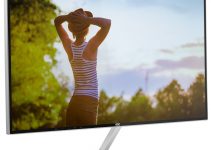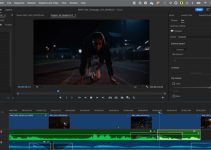Nearly every conversation about color grading or color science when discussing cinema and cameras includes skin tones. You have to nail skin tones. You just have to. It’s also the most difficult aspect of color correction. I know I’ve tried for ages on some clips, especially with mirrorelss cameras and DSLRs pumping out a highly compressed 8-bit log that is just a huge pain to deal with.
Professional colorist Waqas Qazi is here with an in-depth color grading tutorial on how to get “perfect” skin tones in DaVinci Resolve. I’m not going to lie here, the video is three easy steps, and they are easy, but it doesn’t mean it’s not going to take time and practice to get right. It is super nice that he is using difficult footage from a Sony a7R III in S-Log to give a realistic scenario for many people trying to learn.
Qazi is upfront with his take that perfect doesn’t mean realistic or natural, it means appropriate for your film and scene. If you take a second to look at some recent movies you will quickly see skin tones with a green hue or that are overly red.
Those are absolutely not natural looks yet you probably were so absorbed in the film that you didn’t even noticed cause it just looked right for the moment.
Okay, there is an assumption you know your way around Resolve before we get started. He already has a clip loaded up in the Color tab and is talking about nodes. He takes that first node and labels it “primaries” and then makes a new serial node that he labels “saturation.”
Starting with the saturation node he immediately turns it up a bit. Qazi goes all the way to 100 with this S-Log clip. For the primaries node he looks to Offset. He starts moving it around to try and get it to look natural. Focusing on the vectorscope you want to keep the main point in the middle. This didn’t need all that much work.
Continuing with this node he bumps up the contrast first. It’s easier to just go far with it and then turn it down as you need. Working with pivot as well you can balance the scene to make the most of the camera’s dynamic range. Brighten it up or darken it and then play with contrast to balance out your moves. It’s already looking a lot better.
Working more with the primaries he’s starting to work with the parade and waveform. He starts by bringing the Lift down, bumping the Gamma up and moving the Gain down. This should open up the image and exposure a bit. It’s supposed to get you to a good starting point so adjust as needed.
Creating an append node, Qazi calls this one “look.” This is where the skin tones begin to develop. For good skin, he says that it is all in the Gamma/Midtones. Real quickly you can pull out the problem tints and make a massive improvement. Here he took Gamma and took out the magenta that plagues Sony footage.
For more precise adjustments he bumps over to the secondary wheels and uses Midtone. This allows you to start playing with the colors and making some exaggerated moves. It’s adding some nice color and saturation to the actress’s skin. Again, going further and pulling back is easier than trying to slowly find the best look.
Even now it’s looking great. Qazi even points out that if you are crunched for time you can definitely just stop here and move on to your next clip. For “perfect” skin tones this is the end of the first step.
The second step starts with, you guessed it, a new node! Named “hue vs.” this node has you go into the Hue vs. Hue tool and use the eye dropper tool to select a mid-range skin tone. He widens the range and then makes some small adjustments, It seems to be a small change but it all adds up.
Next is the Hue Vs Sat tool and doing the same selection he starts playing with adding a bit more color or taking it out. You really have to play around to see where you want to go with the clip. He decides to give it a bit more saturation. Then go to Hue Vs Luminance, do the same selection and open it up. He then just adds a little brightness and helps clean up skin without needing to do a super advanced qualifying selection.
You can always go back and change things if you want. He even goes back to Hue Vs Hue and takes out some of the yellowish color he added. The next part uses the same Hue Vs Hue with a selection of the green in the background. Again, open it up a little and then make your changes. He is moving the hue to make it contrast the skin to make the actress pop out. Then he uses Hue vs Sat to add some more color. And finally he uses Hue Vs Lum to bring the brightness down in the background.
Adjusting the background made a huge difference to the image and makes everything look good. You have to remember it isn’t just about getting the one thing in the shot looking good. It’s about how the different areas play off one another. Changing the background made her look even better. You aren’t limited to that either. Try making changes to the clothing or other things if you want.
Step two stayed almost entirely in the Hue vs node, but not it’s time for even more. Qazi says that stacking grades is how to really develop a shot.
For step three he uses a layer mixer. Layer mixers isolate while parallel mixers blend things together. Using a qualifier on the layer node he tries to select the skin and you can see it’s not great. That’s definitely thanks to the 8-bit footage. Adjusting the selection in the qualifier try to get it as close as you can. Your mileage may vary.
He is pulling some of the background, which he is okay with since it’s not much and it is similar in tone. However, you might need a window or other selection to help clean up your selection. He also uses the Matte Finesse section and turns Denoise up to about 10 to help smooth it all out. It’s a fairly clean and quick key.
Moving back to the primaries wheels he goes back to gamma and makes some aggressive moves. He also bumps up the Lift to lighten it up and then adds some red back in the gain to make it look a bit more natural. Then, going to midtone detail and moving it down helps clean up skin without a lot of effort. He labels this node “skin.”
Going to the other node in the mixer he plans to add some warmth using the Gain wheel. Since this applies to the whole image it helps blend everything together.
You can use this section to do more blending without affecting the work you already did on the skin, and these changes can help with the highlights and other sections that may not be part of the main selection of skin. This is the “look adjustment.”
The next node is “pop.” Using curves he tosses on three points, bringing up the highlights, dragging down the midtones and shadows a bit. This adds some contrast and adds a nice “pop” to the look.
He also brings down the highlights and ups the gain. This is to keep the image from getting out of control. Back near the curvs you can use the High Soft slider to smooth things out. You can get a nice contrasty look without losing any detail.
And another node! This is going to be a vignette. He creates a fairly basic oval window around the actress and has a ton of softness. Then using curves brings the background down a ton. Move the window around until it looks right and you can see the actress stands out from the background even more.
The tenth node is going to be the glow effect. Changing the composite type to softlight and then adjusting the shine threshold to open things up.
Now you can use the spread to better control the look. Bring the brightness down now to make things look a little more natural. Finally, use blend to make it fit the image even better. You might notice some color shifts at this point and you can always correct them using the offset.
Adding yet another node—Qazi does like layering the effects to build a look—he wants to use a film print emulation. This is built into Resolve’s looks under Film Looks. He likes 2383 as it is common and being an output transform it should be the last thing you do.
It’ll actually help you mimic how it would if you were actually going to have your film printed on a reel of film. It does absolutely crush the footage though.
Qazi heads to Key controls and changes gain to 0.750. He then brings back the contrast. This should bring it back to something nice. It’s the comparison with it on or off that really gets me. It doesn’t seem like it’ll work at first and yet it helps a ton.
While normally the film print emulation is the last thing you do, if you are a fan of grain you would add it after this node. Keep in mind, good footage usually has a style so go with what you think looks good.
It can be intimidating and all those nodes didn’t help. But learning how nodes allow you to slowly and precisely build up your grade is a huge benefit.
You’ll always have to play around with everything to find out what works for each clip. It’s a part of the grading process and it should be fun. This tutorial is detailed but an amazing resource if you are having troubles with your skin tones.
[source: Waqas Qazi]
Order Links:
Disclaimer: As an Amazon Associate partner and participant in B&H and Adorama Affiliate programmes, we earn a small comission from each purchase made through the affiliate links listed above at no additional cost to you.



